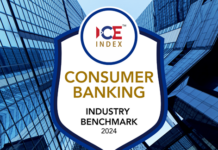The digitisation of payments is accelerating at an eye-watering pace, which, in all likelihood, means that the days of plastic cards may be numbered. But using this digitisation trend to justify a belief that credit cards, as such, will not be around for much longer is a somewhat misguided approach. One that demonstrates a misunderstanding of what credit cards actually are, and why they remain one of the most popular ways of transacting across the world. In fact, a 2018 TransUnion Industry Insights report revealed that the popularity of credit cards as a payment mechanism is still rising, with a 2.6% increase in the number of credit card accounts between the first quarter of 2017 and the first quarter of 2018.
Against that backdrop, it’s very unlikely that the physical plastic form of today’s credit cards will be making an exit from wallets and purses around the world anytime soon. Apart from the convenience and security of having a physical card to pay with, it still gives most consumers a sense of comfort in that it is a tangible representation of the money they have. In the past, cheques fulfilled this role for many people, but now that they are effectively dead and buried, and people’s interactions with cash is typically very fleeting, the plastic card is the only long-term, physical representation that people have of their relationship with their money.
So, while digitised credit payment methods offer even more convenience and transactional flexibility, the actual card is something that can be physically handled. Much like the fears of e-readers causing the demise of printed books are yet to be realised, it is going to take a significant amount of time for consumers to get comfortable with the fact that they don’t need a piece of plastic to tap, swipe, or insert into a point of sale machine to make a purchase.
Then there’s also the merchant part of the equation. A wholesale shift away from the use of physical plastic requires the full buy-in of retailers and service providers which, in turn, will require a significant mindset shift from the cashiers who are manning the register and accepting payments. Perhaps understandably, therefore, there is a measure of reluctance by merchants, many of who have only recently come to grips with remote POS devices, to throw their weight behind a move to cardless digital payment methods.
Of course, this relationship that people have with their physical credit cards is steadily changing, particularly amongst younger consumers. Most of these new generation consumers have also grown up with mobile technology as a core part of their lives, meaning that they are entirely comfortable using an app on their cellphone to pay for a purchase. In fact, they are likely to feel more at ease with digital, or virtual, payment methods than they are with physical ones like cash and cards. A good example of these changing consumer dynamics can be seen in the speed with which the majority of, predominantly young, people have embraced contactless card payments, like tap to pay. These types of advances in payments that require little to no interaction with payment devices will undoubtedly pave the way for entirely cardless, mobile technology enabled transactions sometime in the future.
Ultimately, a fast-growing need for mobility and flexibility of payments will drive the evolution of credit payment transactions and, in all likelihood, lead to the eventual disappearance of plastic cards entirely. When that day might come is, of course, anyone’s guess. But irrespective of if, or when, plastic credit cards do become obsolete, the onus remains firmly on financial institutions to understand that the concept of credit cards has very little to do with the actual plastic card, and everything to do with the customer need for convenient, secure and instant payment mechanisms.
For us at Nedbank, this understanding has always underpinned the design and delivery of all our payments channels. While cards are a physical manifestation of one of the many transactional methods we offer our clients, our goal is to ensure that consumers have access to a vast and diverse payments ecosystem wherever they are in the world, and from which they can select the methods that best suit their unique needs and preferences.
So, no matter what form credit cards take in the future, most people will still always require credit in one form or another to meet their needs – the primary one being the need to be able to make payments wherever they are, whenever they need to, secure in the knowledge that their bank is there to enable and support the transaction.
As such, Nedbank cards are provided on a robust, secure, and proven payments infrastructure to facilitate trusted and convenient payments. Whether these payments are made using a piece of plastic, a cellphone, a digital payment platform like Nedbank scan to pay or some other piece of futuristic technology, is neither here nor there. All that matters is that our customers know that we are always there for them and they can rely on us to meet their payment needs.
Ultimately, that’s all that any person making a payment desires. And for the financial institution that can fully understand that, and innovate to deliver solutions that meet, and exceed, the payment expectations of consumers, the evolution of credit cards and payments is not a scary prospect, but rather a very exciting opportunity to deliver for their clients, enhance their brand and expand their success.
By Chris Wood; Executive: Card Issuing and Payments at Nedbank




























